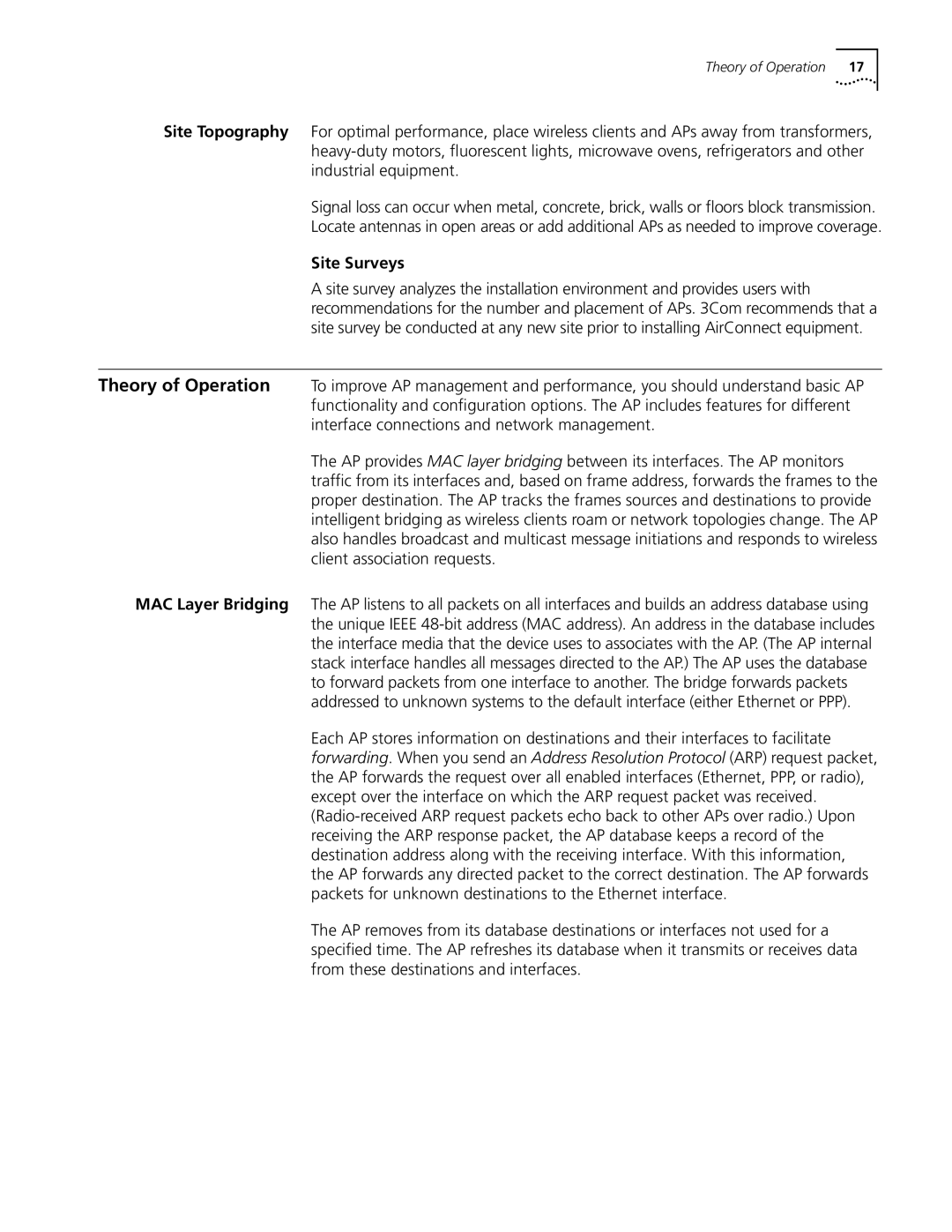
Theory of Operation 17
Site Topography For optimal performance, place wireless clients and APs away from transformers,
Signal loss can occur when metal, concrete, brick, walls or floors block transmission.
Locate antennas in open areas or add additional APs as needed to improve coverage.
Site Surveys
A site survey analyzes the installation environment and provides users with recommendations for the number and placement of APs. 3Com recommends that a site survey be conducted at any new site prior to installing AirConnect equipment.
Theory of Operation To improve AP management and performance, you should understand basic AP functionality and configuration options. The AP includes features for different interface connections and network management.
The AP provides MAC layer bridging between its interfaces. The AP monitors traffic from its interfaces and, based on frame address, forwards the frames to the proper destination. The AP tracks the frames sources and destinations to provide intelligent bridging as wireless clients roam or network topologies change. The AP also handles broadcast and multicast message initiations and responds to wireless client association requests.
MAC Layer Bridging The AP listens to all packets on all interfaces and builds an address database using the unique IEEE
Each AP stores information on destinations and their interfaces to facilitate forwarding. When you send an Address Resolution Protocol (ARP) request packet, the AP forwards the request over all enabled interfaces (Ethernet, PPP, or radio), except over the interface on which the ARP request packet was received.
The AP removes from its database destinations or interfaces not used for a specified time. The AP refreshes its database when it transmits or receives data from these destinations and interfaces.
